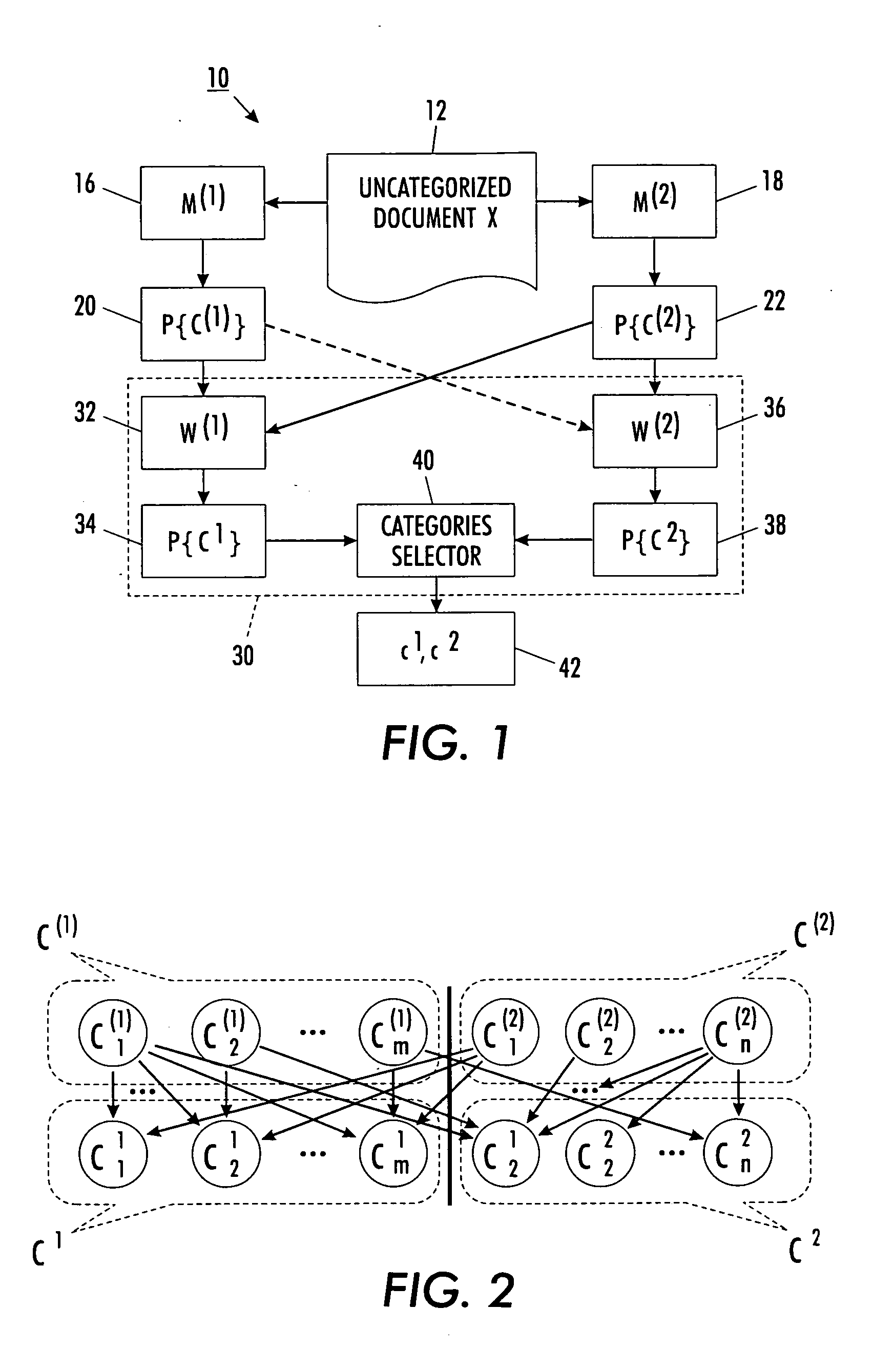Categorization including dependencies between different category systems
- Summary
- Abstract
- Description
- Claims
- Application Information
AI Technical Summary
Problems solved by technology
Method used
Image
Examples
Embodiment Construction
[0015] In an example double-view categorization, the first view or categorization dimension is defined by a set of categories denoted herein as C(1), and the second view or categorization dimension is defined by a set of categories denoted herein as C(2). The C(1) categorization dimension has an associated categorization model denoted M(1), while the C(2) categorization dimension has an associated categorization model denoted M(2). An object or document to be categorized is denoted herein as x. If interdependencies between the C(1) and C(2) dimensions are not taken into account, then the categorization of document x can be performed independently in each of the C(1) and C(2) categorization dimensions. In this case, denoting a category of interest in the C(1) categorization dimension as c(1), a probability value indicative of the object for the category c(1) is suitably given as:
P(c(1)|x,M(1)) (1),
and, denoting a category of interest in the C(2) categorization dimension as c(2), a ...
PUM
 Login to View More
Login to View More Abstract
Description
Claims
Application Information
 Login to View More
Login to View More - R&D
- Intellectual Property
- Life Sciences
- Materials
- Tech Scout
- Unparalleled Data Quality
- Higher Quality Content
- 60% Fewer Hallucinations
Browse by: Latest US Patents, China's latest patents, Technical Efficacy Thesaurus, Application Domain, Technology Topic, Popular Technical Reports.
© 2025 PatSnap. All rights reserved.Legal|Privacy policy|Modern Slavery Act Transparency Statement|Sitemap|About US| Contact US: help@patsnap.com



